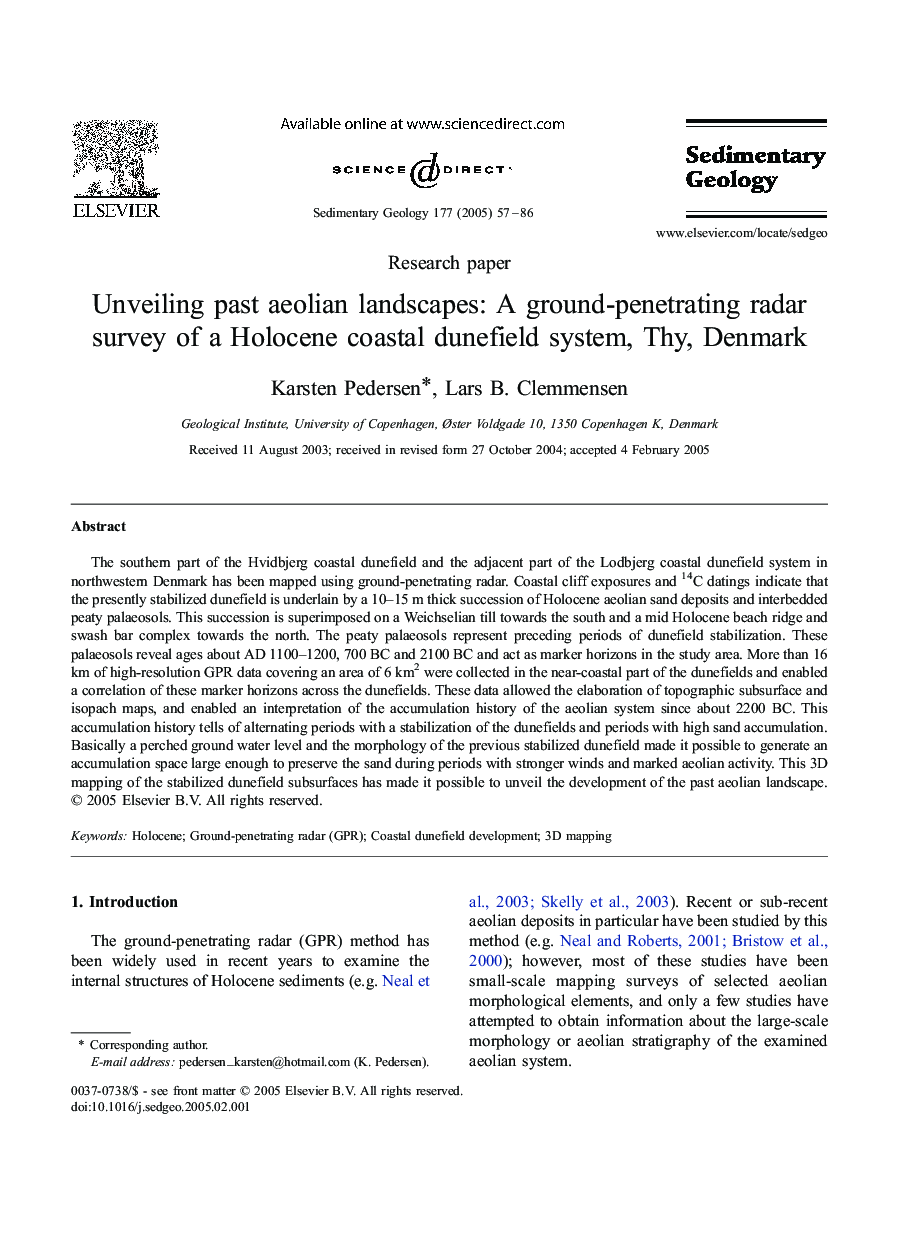| Article ID | Journal | Published Year | Pages | File Type |
|---|---|---|---|---|
| 9526150 | Sedimentary Geology | 2005 | 22 Pages |
Abstract
The southern part of the Hvidbjerg coastal dunefield and the adjacent part of the Lodbjerg coastal dunefield system in northwestern Denmark has been mapped using ground-penetrating radar. Coastal cliff exposures and 14C datings indicate that the presently stabilized dunefield is underlain by a 10-15 m thick succession of Holocene aeolian sand deposits and interbedded peaty palaeosols. This succession is superimposed on a Weichselian till towards the south and a mid Holocene beach ridge and swash bar complex towards the north. The peaty palaeosols represent preceding periods of dunefield stabilization. These palaeosols reveal ages about AD 1100-1200, 700 BC and 2100 BC and act as marker horizons in the study area. More than 16 km of high-resolution GPR data covering an area of 6 km2 were collected in the near-coastal part of the dunefields and enabled a correlation of these marker horizons across the dunefields. These data allowed the elaboration of topographic subsurface and isopach maps, and enabled an interpretation of the accumulation history of the aeolian system since about 2200 BC. This accumulation history tells of alternating periods with a stabilization of the dunefields and periods with high sand accumulation. Basically a perched ground water level and the morphology of the previous stabilized dunefield made it possible to generate an accumulation space large enough to preserve the sand during periods with stronger winds and marked aeolian activity. This 3D mapping of the stabilized dunefield subsurfaces has made it possible to unveil the development of the past aeolian landscape.
Related Topics
Physical Sciences and Engineering
Earth and Planetary Sciences
Earth-Surface Processes
Authors
Karsten Pedersen, Lars B. Clemmensen,
